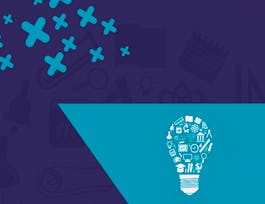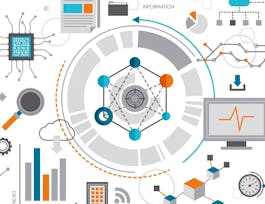This course has four modules, or foci. The first is to understand the categories of social welfare—populations, income, earnings, and assets— and some related concepts that play a very large role in shaping policy decisions: unemployment, inflation, and the minimum wage. The second deals with the central institution of social welfare—the labor market, which largely determines how many resources a person has. The labor market also establishes hierarchy, both through meritocracy and through categories of privilege. The third is poverty: the differing ways we define who is poor, and how effective U.S. anti-poverty efforts have been. The final module looks directly at federal decision making, the political organization of ideas, the structure of U.S. government, and the legislative process that shapes much of our social policy. This course addresses issues of power, oppression, and white supremacy.


Poverty & Population: How Demographics Shape Policy
This course is part of Social Policy for Social Services & Health Practitioners Specialization
Taught in English
Some content may not be translated

Instructor: John Robertson
7,462 already enrolled
Included with 
Course
(144 reviews)
What you'll learn
Understand the the US population: age, family structure, education and race/ethnicity to interpret where US social policy is being pushed.
Explain poverty & inequality in the US that results in differing levels of privilege, and opportunity to address the needs of those left behind
Describe the policy process – legislative, executive, judicial and voluntary – to act to improve US social policy
Honors: Report on research of practices on the ground in preparation for a professional policy analysis.
Skills you'll gain
- - Formulate practice strategies to overcome the historic biases in social welfare programs
- - Distinguish the values inherent in each social policy initiative
- - Critique components of a social policy based on their effectiveness at meeting the goals stated in the initiative
- - Differentiate alternative approaches to social policy problems
- - Develop social welfare policy analysis and reform proposals
Details to know

Add to your LinkedIn profile
4 quizzes
Course
(144 reviews)
See how employees at top companies are mastering in-demand skills

Build your subject-matter expertise
- Learn new concepts from industry experts
- Gain a foundational understanding of a subject or tool
- Develop job-relevant skills with hands-on projects
- Earn a shareable career certificate


Earn a career certificate
Add this credential to your LinkedIn profile, resume, or CV
Share it on social media and in your performance review

There are 4 modules in this course
This module will remind the reader of basic social welfare concepts: population variables, earning, income, assets as well as inflation, unemployment and the minimum wage.
What's included
14 videos1 reading1 quiz1 peer review
This module will probe the most important social welfare programs in moderns societies, the workplace and will evaluate who is advantaged and who is disadvantaged and why
What's included
9 videos1 reading1 quiz1 peer review
In this module, the learner will differentiate the different measures of poverty, understand the significance of measuring poverty and question the place of various demographic groups in their relative poverty
What's included
10 videos1 reading1 quiz1 peer review
In this module, the learner will review the US Government structure and process and explain how policies are formulated using the legislative structure.
What's included
14 videos1 reading1 quiz2 peer reviews
Instructor

Offered by
Recommended if you're interested in Governance and Society

Columbia University

Fundação Instituto de Administração

Banco Interamericano de Desarrollo

University of Michigan
Why people choose Coursera for their career




Learner reviews
Showing 3 of 144
144 reviews
- 5 stars
85.41%
- 4 stars
13.19%
- 3 stars
1.38%
- 2 stars
0%
- 1 star
0%

Open new doors with Coursera Plus
Unlimited access to 7,000+ world-class courses, hands-on projects, and job-ready certificate programs - all included in your subscription
Advance your career with an online degree
Earn a degree from world-class universities - 100% online
Join over 3,400 global companies that choose Coursera for Business
Upskill your employees to excel in the digital economy
Frequently asked questions
Access to lectures and assignments depends on your type of enrollment. If you take a course in audit mode, you will be able to see most course materials for free. To access graded assignments and to earn a Certificate, you will need to purchase the Certificate experience, during or after your audit. If you don't see the audit option:
The course may not offer an audit option. You can try a Free Trial instead, or apply for Financial Aid.
The course may offer 'Full Course, No Certificate' instead. This option lets you see all course materials, submit required assessments, and get a final grade. This also means that you will not be able to purchase a Certificate experience.
When you enroll in the course, you get access to all of the courses in the Specialization, and you earn a certificate when you complete the work. Your electronic Certificate will be added to your Accomplishments page - from there, you can print your Certificate or add it to your LinkedIn profile. If you only want to read and view the course content, you can audit the course for free.
If you subscribed, you get a 7-day free trial during which you can cancel at no penalty. After that, we don’t give refunds, but you can cancel your subscription at any time. See our full refund policy.

